Black Bond Books
Browsing Customer Interaction: Genre Conversation Cards
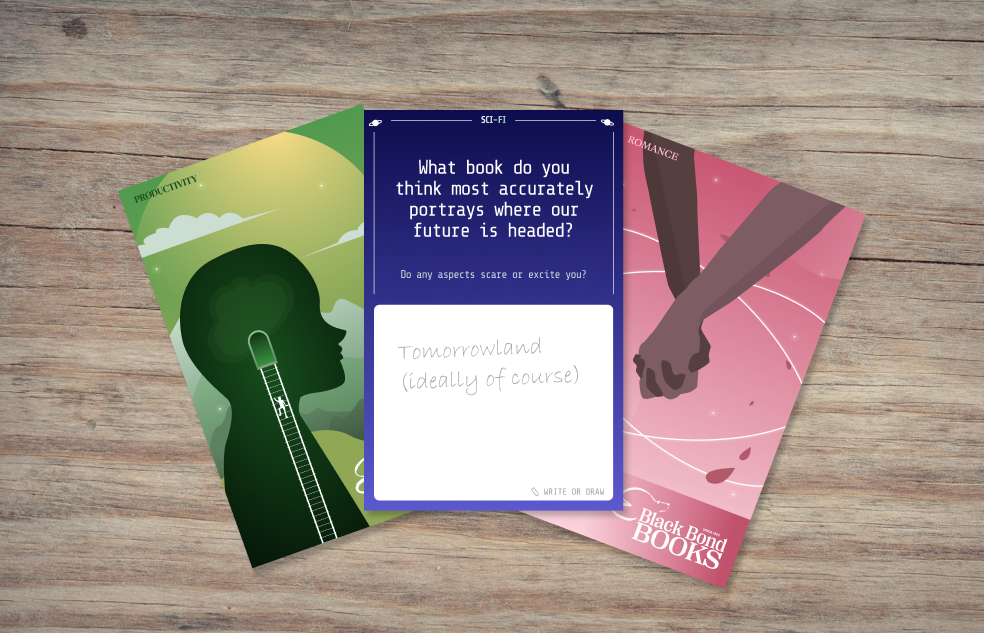
Overview
Black Bond Books is a family-owned Canadian book retailer that prides itself on personalizing customer experiences compared to their large-scale competitors. Yet customers coming into stores often leave without engaging with staff to receiving these experiences.
As part of team of senior students, I collaborated with staff to propose an interactive physical deck of conversation cards to improve in-store shopping experiences for browsing customers.
The prototyped conversation cards was met with high praise with Surrey location’s store manager, and adopted with high-interactivity within the Romance section.
- Project Type
- Case Study
- Product
- Mockup Conversation Cards
- Role
- Content Strategy, Client Management
- Team
- Michael Dresler, Jaden Lee, Abbey Perley
Problem Space
Learning alongside Black Bond Book staff, I gained insight on how browsing customers will often engage with staff.
Some browsers are open to chatting once prompted, some wished to be left alone entirely, and others avoid speaking altogether due to awkward small talk.
How might we create low-stakes spaces for dialogue among less outspoken browsers within store locations?
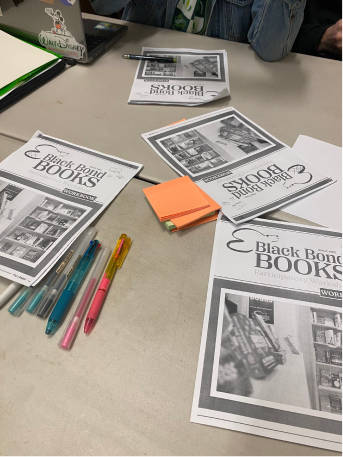
Intitial Concept
For the first round of concepts, I considered developing a community board that would allow for customers to choose the level of their involvement. With sticky-notes and stickers, customers could engage as much as they wish, without the pressure of face-to-face interaction
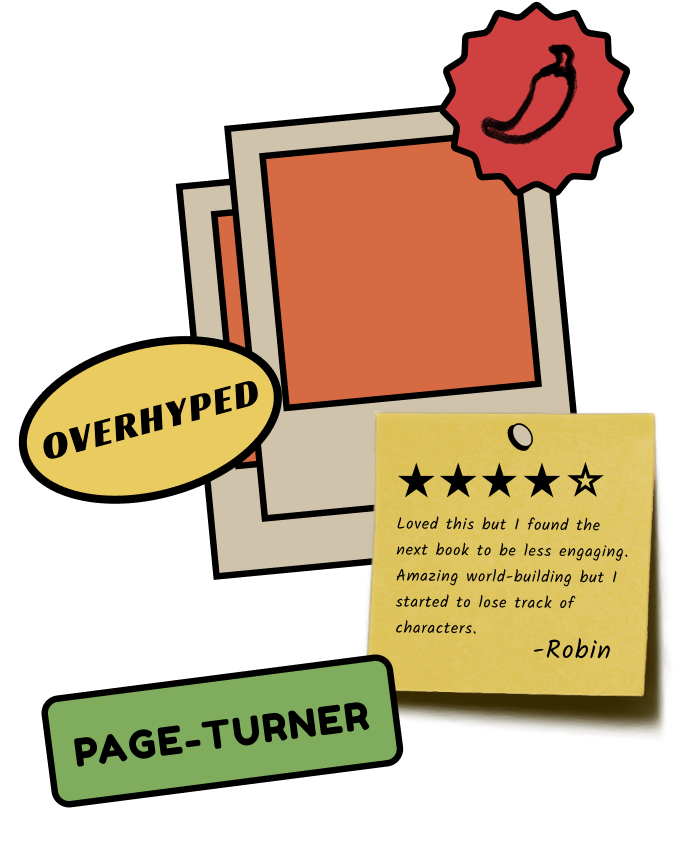
The Challenge
The team was unsure if customers would engage with a community board concept. Limited participation or an influx of inappropriate comments would cause the board to be more of a burden than a solution.
To affirm that a passive interaction approach would be viable concept in the store atmosphere, I suggested we conduct a trial.
After one-week, the board was filled with both written and drawn responses to our bookish questions.
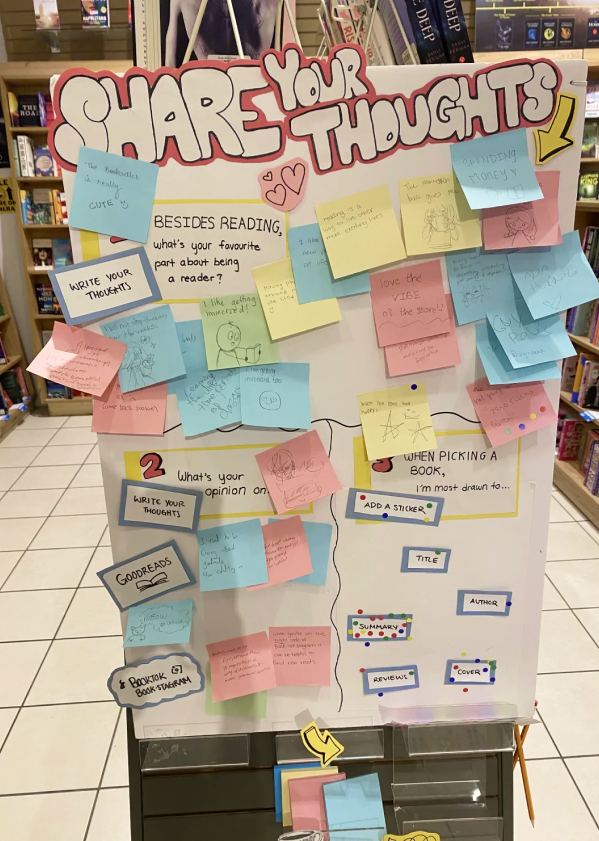
Final Concept
I further developed on this concept to propose "Genre Conversation Cards".
Cards would be placed on shelves with genre-related questions that browsers could choose to respond to or read others’ responses. These cards could also spark spoken conversation between staff and customers.
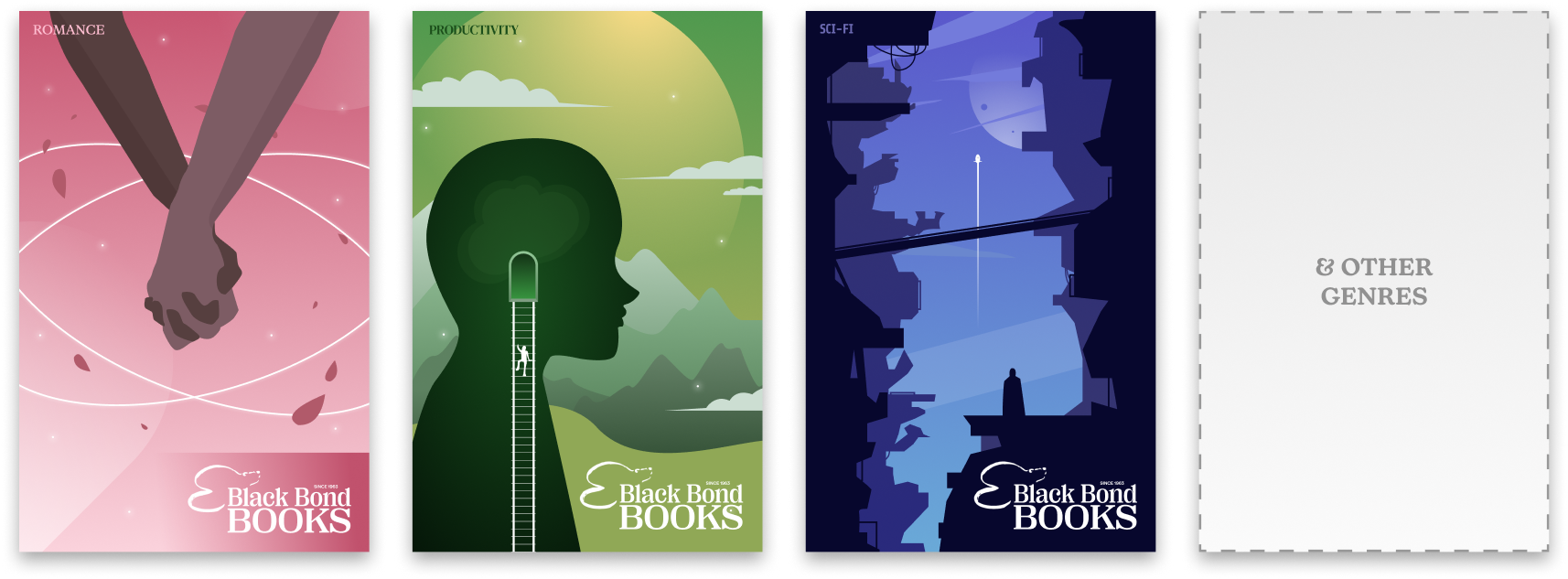
Project Takeaways
There isn’t always a problem to solve
When approaching a project with a client, problems aren't always readily apparent. Only through engaging in co-creation was I able to understand the browswer and employee experience to identify an opportunity space.
Client perspective is crucial to maintain
Considering project feasibility allowed the prototype be to successful.